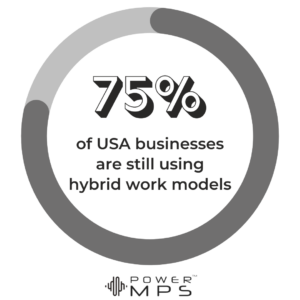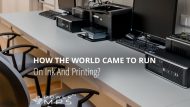When the pandemic hit in 2020, global governments implemented extreme lockdowns. As a result, businesses that weren’t considered “essential” were forced to find new ways to do business. And a large part of that was moving employees to remote workspaces wherever possible.
Both businesses and employees reaped the rewards from this maneuver. Perhaps the most important benefit was that companies were able to stay open despite mandates. As such, employees were able to ditch their daily commutes, spend more time with their families, and generally avoid exposure to COVID, flu, and other common illnesses found around schools and offices.
But now that COVID-19 is not a big concern, some employers are starting to change their tune about remote work. Unfortunately, hybrid and remote jobs have dominated listings for the past two years,. Employees have begun to accept that the new workplace norm includes allowing employees more flexibility over time and place of employment.
The contrast between what business leaders want and employee expectations are increasingly stark. For example, recent polls show around 50% of company leaders want their staff back in the office full-time. Yet over 52% of workers have plans to switch to hybrid or fully remote positions. Even more, telling is the number of employees that would actively choose to be in an office forty hours per week – 12%.
But, as the job market continues to favor the worker (at an average of 1.7 positions open for every person looking), employers may want to step back on their demands for in-person appearances at the office. Fortunately, the right printing programs can help any office be a more flexible workspace – providing better options to attract and retain employees, no matter the office format.
Why Aren’t More People Willing To Work On-Site?
The ratio of occupied space to the total available space is known as an occupancy rate. Compared to the pre-pandemic era, office occupancy in the top 10 metros is now over 50%. Yet, many US businesses, including Vanguard, Paycom, Amazon, Salesforce, and Google, are pushing employees to return to the office at least three days a week. Some have begun taking attendance and threatening to fire for those who don’t comply.
But most (75%) of US businesses are still using hybrid work models or are planning to move to that model soon. So despite the end of the government pandemic response and the proliferation of vaccines, experts don’t anticipate office occupancy to get much higher than it is right now.
But why are workers seeming more inclined to the hybrid office than a full return? COVID had a lot to do with that.
During lockdowns and in the years after, when hybrid and remote work continued to be the norm, many workers took the opportunity to move – seeking out locations that had more affordable living and better education or communities for their families. But even those that stuck closer to the office saw added benefits such as:
- More freedom to choose a working model that fits their needs to increase productivity.
- Better work-life balance as employees and their families feel they are home and more and more attuned to what is happening there.
- Spending less on childcare such as before and after school programs.
- Reducing or eliminating the daily commute lets employees spend less on fuel, vehicle maintenance, or public transportation fees. In many municipalities, it also saves a notable amount of time.
It is hardly surprising to discover that most employees don’t want to go back to the office. A Gallup survey in August of last year found that 34% of respondents chose to work remotely full-time, while 60% preferred a hybrid setup Only 6% of respondents indicated they would like to work in the office full-time.
Meeting the Needs of Business and Workers
Acknowledging this new trend toward remote and hybrid work, over half of US jobs that can be performed remotely were officially hybrid as of November 2022. And they are reaping the rewards.
Recent research has shown working from home boosts productivity by thirteen percent. This performance improvement came from more calls being made per minute due to a more comfortable and quiet working environment and by working longer shifts with fewer sick days and breaks.
But what does that mean for printing, something many businesses have struggled to modify to fit the remote workforce? First, printing is a crucial activity for workers, no matter where they are.
Businesses looking to provide real flexibility for their employees can look at leveraging the power of Managed Print Services (MPS) partners. These businesses can provide a wide range of options that fit fully remote, hybrid, and in-person offices.
Even workers with print-heavy jobs have found the flexibility MPS provides an easy way to maintain productivity no matter their office set-up. Mobile printing setuptivity, small-footprint printers, multi-address supply delivery, and service to any location make office printing easy for any office format.
Keep Workers Happy With Flexible Office Printing
Remote employment is here to stay. But, according to a recent survey of more than 1,100 US business executives, only a small fraction of CEOs consider moving workers to a physical office a priority in 2023.
Over ninety-five percent of job postings today are considered flexible, allowing the best candidates to work remotely, hybrid, or entirely on-site potentially. And employers see the option as necessary to tap into talent pools that would otherwise be out of reach.
Office printing partners are the best choice for business in this flexible office environment. These businesses have built options, technology, and service structures designed to fit a variety of office configurations and needs. In addition, most MPS partners include must-have features for any US company, including printer security, print tracking, ongoing remote print software updates, and robust reporting.
With most employees preferring more flexible work options, businesses need the technology and capabilities to accommodate remote, hybrid, and on-site workforces. Fortunately, thanks to managed print services, companies can provide their employees with adequate and reliable printing equipment and solutions.







